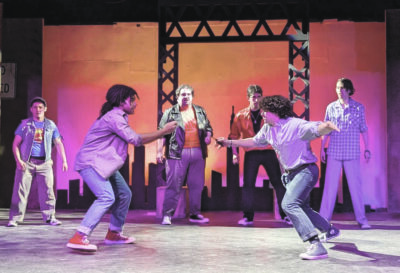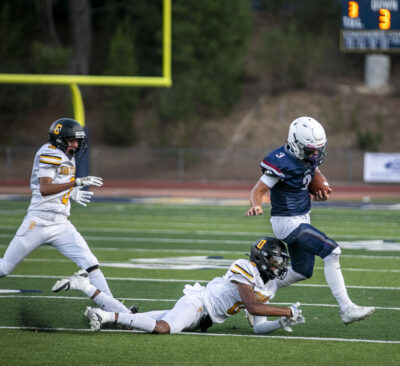About 50 people gathered Thursday at the Canyon Country Community Center, as city officials sought to address recent questions they’ve received about the lithium-ion battery-based energy storage system in Canyon Country.
Terra-Gen’s website describes its 2.3-acre facility near Soledad Canyon and Solemint roads as a “stand-alone 80-megawatt energy-storage project.”
Mark Turner described Terra-Gen as the designer, builder, owner and operator of the project, as the vice president of energy development for the company.
Turner said he’s been working in the industry for nearly 30 years, and he’s been involved in the Canyon Country project since the initial outreach phase. He said he also was there to explain why the project was safe from a planning aspect, along with Brian Fink, a retired New York fire captain and consultant with the Fire & Risk Alliance, a fire-protection engineering firm standing with Terra-Gen to address technical fire safety questions.
While recent incidents in the news, particularly the fire at Moss Landing, raised major concerns about what happens in the event of a fire, Turner described the project as safe because it was “a compartmentalized, outdoor, enclosure-based system.”
“We were gonna emphasize that today because the fire risk on a system like that, is essentially the container itself, which is about the size of a shed in your backyard,” Turner said. He said that was a much more realistic representation of the risk of danger than recent comparisons to Moss Landing, a Northern California 2.5-gigawatt facility scientists described as “the world’s largest collection of batteries on the grid.”
That facility caught fire and burned for days before it could be extinguished, with residents complaining of health and pollution impacts from the incident.
That project was built to an old code with a different structure that put many batteries in a single building, Turner said.
“Where we’ve located (the Canyon Country project) is safe and efficient — for the neighbors, for the community and the first responders,” he said.
Canyon Country project
Due to the area’s zoning, the project was approved by the city’s Planning Commission in 2021, according to Jason Crawford, the city’s community development manager, in previous comments on the project.
Josh Costello, an inspector with the Fire Department’s code enforcement division for fire prevention, started the meeting with an explanation of the different types, as well as the purpose of Terra-Gen’s: a place where energy from solar and wind sources can be stored when the supply is available but not needed.
He also discussed the main concerns for safety and hazards, which was the meeting’s main purpose: electric shock hazard; thermal-runaway vent gases; flammable gases (hydrogen, CO, hydrocarbons); fire and deflagration (overpressure event); and site cleanup, in the event of an incident.
“We do go over and above what the codes require, in the sense that we require the worst-case failure scenario so that we can anticipate that — out of an abundance of caution and due regard,” Costello said, adding they also require technical test reports and modeling that validates any claims about a facility.
And the initial response generally would be the same as the agency handling an industrial accident or a hazardous materials site, in the event of a fire.
Speaking to that possibility, Assistant Fire Chief Pat Sprengel talked about the preparation aspect, which involved both Santa Clarita Valley battalions, 6 and 22, having completed the training and committed to continual training, for fire protection.
He then walked residents through what a response would look like. He detailed the personnel, the approach and the strategy, and then after the presentations came public comment.
Resident feedback
Assistant City Manager Frank Oviedo opened up the question with a claim that had been repeated earlier but he wanted to address directly.
“Let me just ask the question outright,” Oviedo said. “Can these fires be put out?”
Sprengel paused and then Fink jumped in to say: “I’ll answer that one: Your best option is to let the container that’s involved burn itself out. Water is not effective. Neither is foam. There is no product that will put out a lithium ion battery — in your e-Bike, in your cellphone, in your electric scooter or in these (battery) cabinets.”
There are also options to evacuate or shelter in place in the event of an emergency, Sprengel said.








